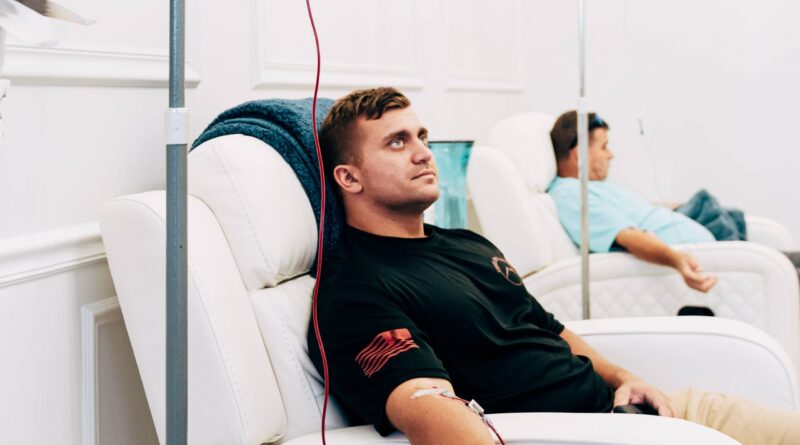How Ozone Therapy is Revolutionizing Sports Medicine
In the realm of sports medicine, where the rapid recovery and optimal health of athletes are paramount, innovative treatments are continually sought after. One such treatment gaining significant traction is ozone therapy. Traditionally known for its applications in dermatology and dentistry, ozone therapy is now making groundbreaking strides in sports medicine, offering new ways to enhance healing and recovery for athletes.
Understanding Ozone Therapy
This involves the administration of ozone gas—composed of three oxygen atoms (O3)—into the body. Ozone therapy in Dubai can be done through various methods, including intramuscular injections, indirect blood ozonation, and rectal insufflation. The underlying principle is that ozone’s reactive properties can stimulate oxygen metabolism, enhance blood circulation, and activate the immune response.
Mechanisms of Action in Sports Medicine
Enhanced Oxygenation and Tissue Repair
Ozone therapy works primarily by increasing the oxygen levels within the body, which is crucial for athletes whose tissues are often starved for oxygen after intense activity. Ozone improves the efficiency of the body’s antioxidant enzyme system, which helps in mitigating oxidative stress, a common aftermath of strenuous physical exercise. This enhanced oxygen utilization aids in faster tissue repair and regeneration, crucial for recovery.
Anti-inflammatory Properties
Inflammation is a typical response to injury, but chronic inflammation can lead to prolonged pain and delayed healing. Ozone therapy has been shown to modulate the immune system, thereby reducing inflammation and promoting quicker recovery times. By controlling inflammatory processes, ozone helps in managing pain and swelling, allowing athletes to return to training sooner.
Infection Control
Ozone’s potent antimicrobial properties are well-documented. It can kill bacteria, viruses, fungi, and yeast, making it an excellent treatment for sports-related wounds or infections. In environments where athletes are prone to cuts and scrapes, ozone therapy can ensure these minor injuries do not become gateways to more significant health issues.
Applications in Sports Medicine
Recovery and Rehabilitation
Ozone therapy is increasingly being integrated into rehabilitation programs for athletes recovering from injuries. For example, when administered post-surgery or after acute injuries, ozone can significantly reduce the recovery period and improve outcomes by enhancing tissue oxygenation and resilience.
Performance Enhancement
While primarily therapeutic, there’s growing interest in ozone therapy’s potential for enhancing athletic performance at sports medicine clinics Dubai. By improving blood flow and oxygen delivery to muscles, ozone therapy can potentially enhance endurance and stamina, although this application remains under more extensive scrutiny and ethical debate regarding performance enhancement.
Preventative Care
Regular sessions of ozone therapy might reduce the overall incidence of injuries by maintaining higher oxygen levels in tissues, thus ensuring that muscles and joints are less susceptible to the wear and tear associated with intense physical activities.
Clinical Evidence and Research
Research into the benefits of ozone therapy in sports medicine is ongoing, with several studies indicating positive outcomes. For instance, a study published in the “Journal of Sports Medicine and Physical Fitness” found that ozone therapy helped reduce the recovery time in athletes suffering from soft tissue injuries. Another research indicated improved pain management in chronic tendinopathies commonly seen in athletes.
Despite these promising results, the scientific community must continue exploring ozone therapy with rigorous clinical trials to fully understand its benefits and limitations.
Challenges and Considerations
Regulatory and Safety Concerns
The use of ozone therapy in sports medicine must navigate various regulatory landscapes, which can vary significantly from one country to another. Furthermore, the therapy must be administered by trained professionals under controlled conditions to avoid potential side effects, such as pulmonary irritation or ozone toxicity.
Accessibility and Cost
As with many advanced therapies, access to ozone treatment can be limited and may be expensive. This makes it less accessible to amateur athletes or smaller sports organizations.
Summing Up
Ozone therapy is proving to be a valuable addition to the arsenal of treatments in sports medicine, offering benefits that can lead to faster recovery, reduced downtime, and potentially enhanced performance. As research continues to evolve, this therapy may become a staple in the treatment regimens of athletes around the world. However, its use must be carefully managed and monitored to maximize its benefits while minimizing risks. With its revolutionary potential, ozone therapy could indeed be set to change the landscape of sports medicine, making it an exciting time for practitioners and athletes alike.

